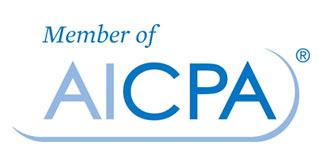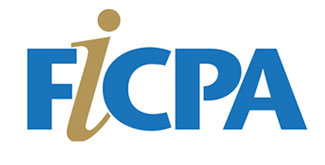On August 8, 2020, President Trump signed four executive actions which the Administration said will assist individuals and businesses suffering as a result of economic fallout from the COVID-19 pandemic. The actions came after stimulus talks on Capitol Hill ground to a halt. Of the four actions taken by President Trump, the one that will most affect taxpayers and practitioners is the President’s memorandum on deferring payroll tax obligations. Under this memorandum, the Treasury Secretary is directed to use his authority to defer the withholding, deposit, and payment of employee social security taxes, subject to certain wage limitations. As practitioners await the Treasury Secretary’s guidance and also clarity on whether the deferred payroll taxes will ultimately be forgiven, many are advising clients to continue withholding payroll taxes in full.
Memorandum on Deferring Social Security and RRTA Tax Obligations
In order to pay for the Social Security and Medicare programs, social security taxes and Railroad Retirement Tax Act (RRTA) taxes are assessed on employees and employers. One of the executive actions signed by President Trump on August 8 is the Memorandum on Deferring Payroll Tax Obligations in Light of the Ongoing COVID-19 Disaster (Payroll Tax Memorandum). In the Payroll Tax Memorandum, President Trump directs Treasury Secretary Mnuchin to use his authority to defer the withholding, deposit, and payment of employee social security taxes, as well as taxes imposed under the Railroad Retirement Tax Act (RRTA) on railroad employees, for the period of September 1, 2020, through December 31, 2020.
Eligible Employees. The deferral is only available with respect to any employee with wages or compensation, as applicable, payable during any bi-weekly pay period of less than $4,000, calculated on a pre-tax basis, or the equivalent amount with respect to other pay periods. This equates to $104,000 per year. The Payroll Tax Memorandum provides that the amounts deferred are not subject to any penalties, interest, additional amount, or addition to the tax. President Trump has said that he will forgive the amounts deferred if he is reelected.
Employers and Self-Employed Individuals. Self-employed individuals are not affected by the Payroll Tax Memorandum. While that could change in the future, it would be prudent for such individuals to continue making their estimated self-employment tax payments. Under the Coronavirus Aid, Relief, and Economic Security Act (CARES Act), employers are already eligible to defer the payment of the employer portion of social security and RRTA taxes through the end of 2020. Specifically, the payment by an employer of such taxes was delayed for the period beginning on March 27, 2020, and ending before January 1, 2021.
Additional Guidance Authorized. The Payroll Tax Memorandum also authorizes Secretary Mnuchin to issue guidance to implement these orders and directs him to explore avenues, including legislation, to eliminate the obligation to repay the deferred taxes.
Uncertainties Surrounding the Deferral of Payroll Taxes
The Payroll Tax Memorandum has triggered a heated debate about whether the President has exceeded his authority in authorizing the payroll tax deferral and whether the executive action is constitutional – issues which are unlikely to be settled within the applicable timeframe of memorandum. In the meantime, tax practitioners, employers, and employees who might have their social security taxes deferred are faced with numerous practical challenges as a result of the payroll tax deferral directive.
Probably the biggest question is whether employers should continue withholding the social security or RRTA taxes under the theory that they will have to be repaid in the future. That would seem at odds with the idea behind the Payroll Tax Memorandum which is to put more money in employees’ pockets. On the other hand, employers could find themselves liable for the taxes at the end of the year if they are not ultimately forgiven.
Other issues are:
- What happens if an employer does not continue withholding the taxes and the employee then leaves the business and the taxes have to be repaid? Who will the IRS go after – the former employee or the employer?
- Does the $4,000 limitation on who is eligible for the deferral apply before taking into account items like 401(k) contributions that subsequently reduce an employee’s salary?
- What does a business do with social security taxes it continues to withhold? How does the business account for them on their financial statements? Would cash accounts and current liabilities be higher than normal so that explanations will be needed to readers of financial statements?
- What happens if a business, which continues to withhold an employee’s social security taxes and sets them aside to later be paid to the IRS, goes out of business or files for bankruptcy?
Other Executive Actions
In addition to the memorandum deferring payroll tax obligations, the President also signed the Memorandum on Authorizing the Other Needs Assistance Program for Major Disaster Declarations Related to Coronavirus Disease 2019. Under this memorandum, unemployment insurance payments of $400 per week would be provided to unemployed individuals as long as the governor of the state in which the unemployed person lives agrees to contribute $100 of that amount. Since many state budgets are underwater, it remains to be seen if state governors will sign onto this program.
In the Executive Order on Fighting the Spread of COVID-19 by Providing Assistance to Renters and Homeowners, President Trump directs the Secretary of Health and Human Services and the Director of the Centers for Disease Control and Prevention to consider measures temporarily halting residential evictions of any tenants for failure to pay rent where such actions are reasonably necessary to prevent the further spread of COVID-19 from one state or possession into any other state or possession and to identify available federal funds that might provide temporary financial assistance to renters and homeowners.
Finally, in the Memorandum on Continued Student Loan Payment Relief During the COVID-19 Pandemic, President Trump directs the Secretary of Education to take action pursuant to applicable law to effectuate appropriate waivers of, and modifications to, the requirements and conditions of certain economic hardship deferments and provide such deferments to borrowers as necessary to continue the temporary cessation of payments and the waiver of all interest on student loans held by the Department of Education until December 31, 2020.


